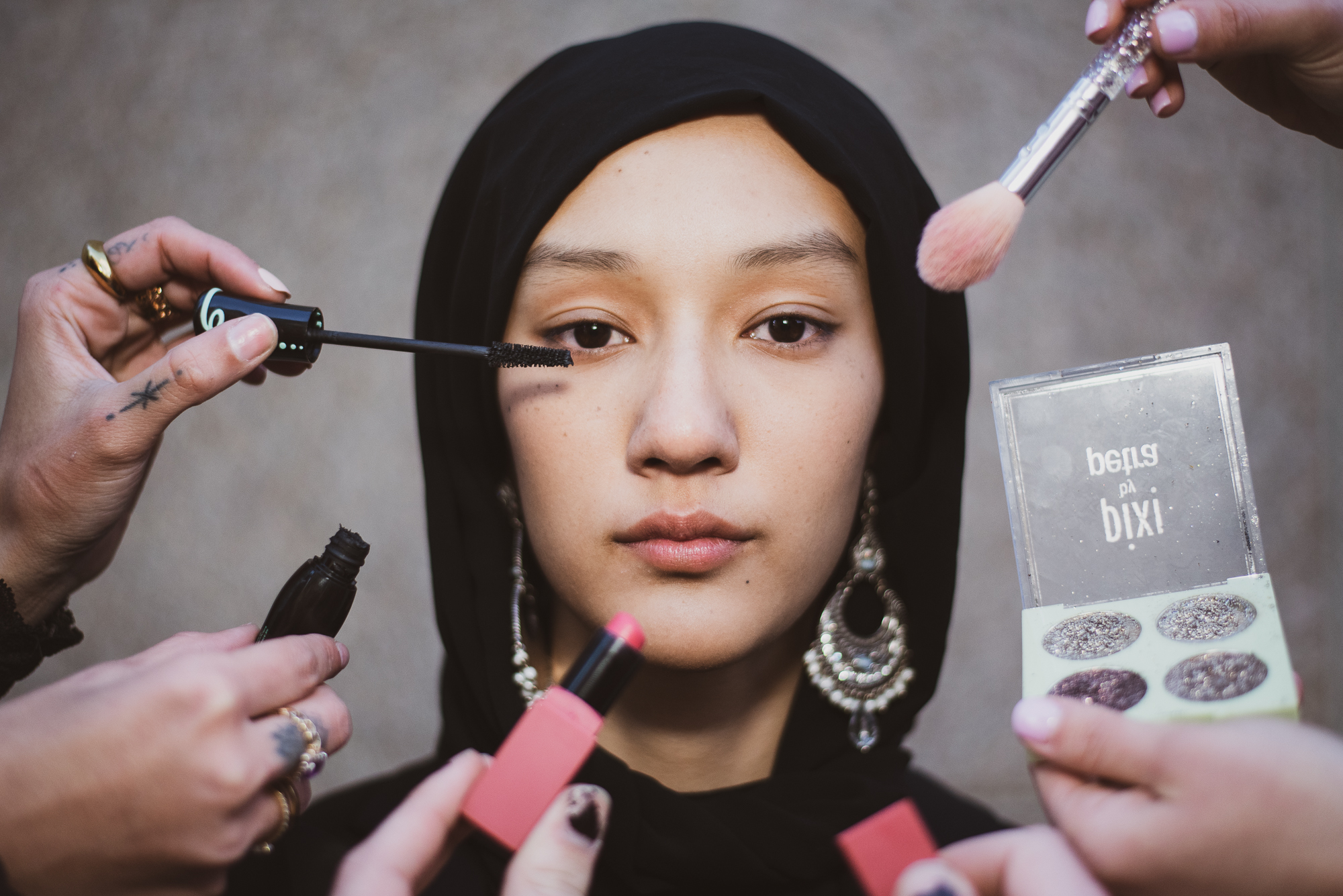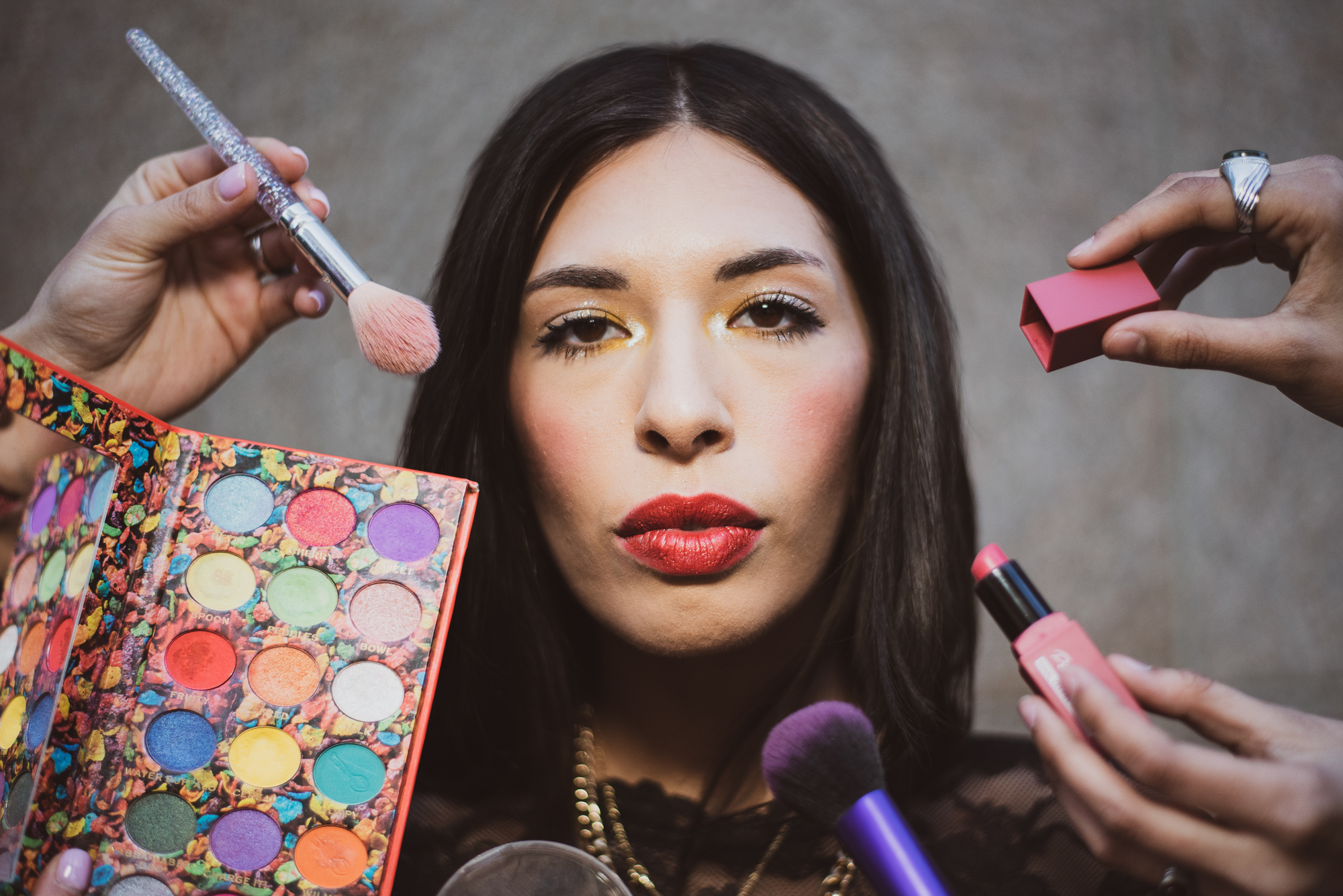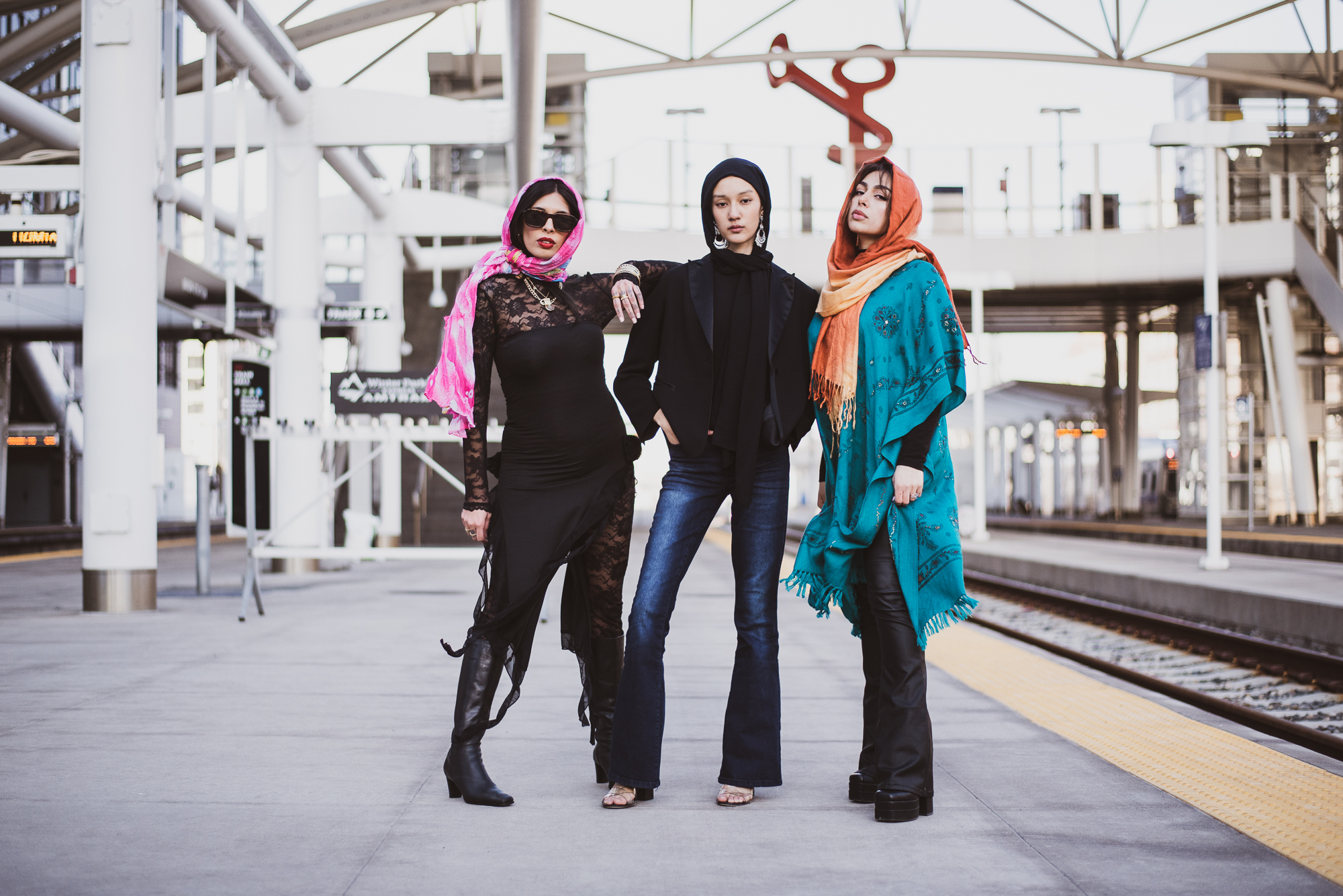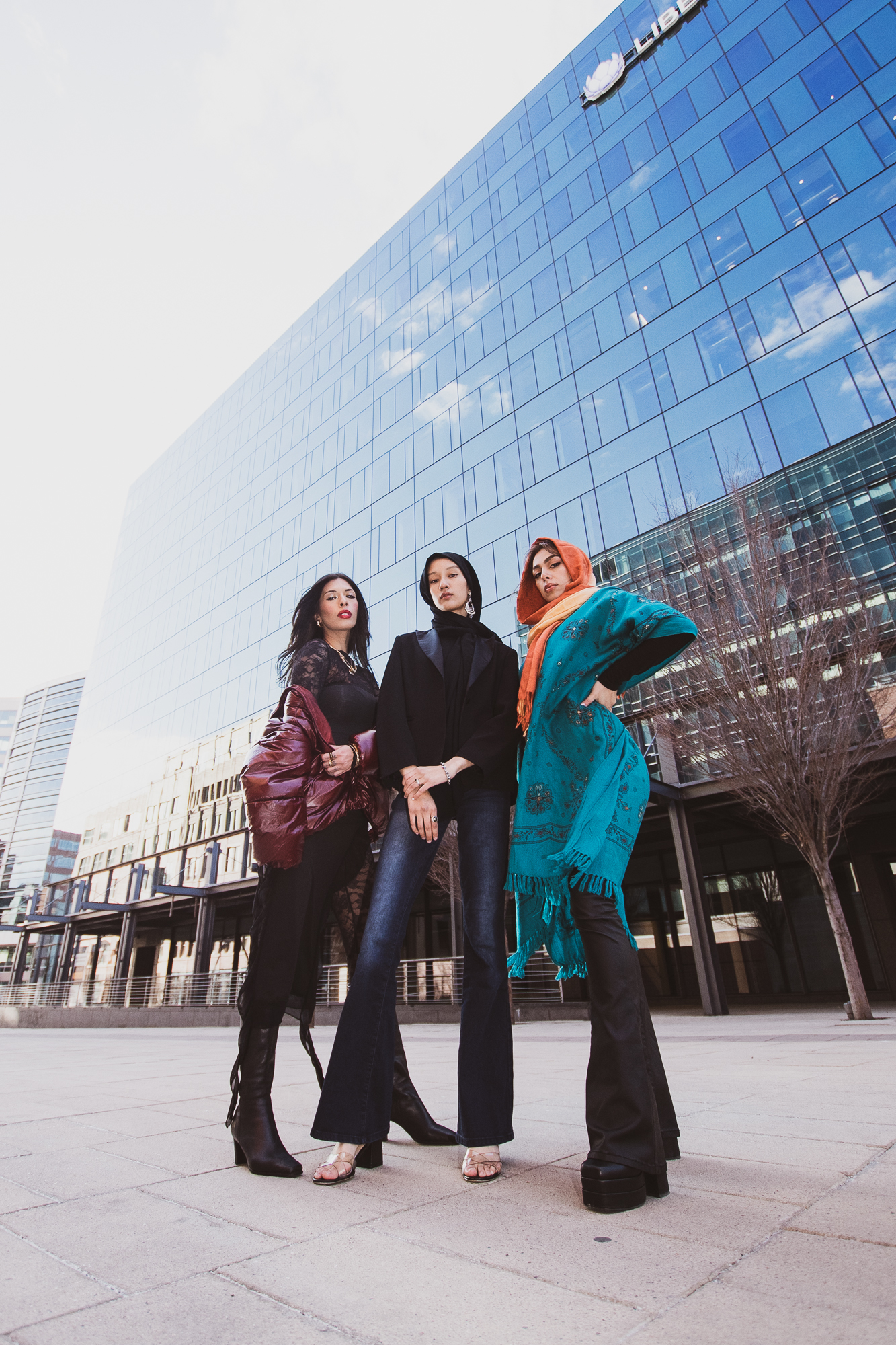As fashion trends keep changing, young Muslim women are finding creative ways to stay current while adhering to their religion and culture. Despite challenges, Muslim women are carving out their own space in the fashion world and redefining what it means to be fashionable while staying modest. Some stereotypes assume that Muslim women must wear the Hijab (headscarf) or they’re expected to be covered head to toe, but per the religion, it’s all a choice. Fashion and the way these women dress are completely up to them, and today, we can see how these women are making them their own. Using different cultural clothing, colors, and outfit accessories, every Muslim woman dresses differently.
Narges Torabinejad is a 26 year old Iranian-Muslim model from Virginia. Torabinejad takes pride in her Iranian culture, and incorporates that into a lot of her looks.

“I wouldn’t really say my personal style is influenced by anything. I try to dress for myself regardless of what goes in or out of style,” Torabinejad said. One accessory I can’t live without would be my evil eye necklace. My family is pretty superstitious so it’s always on my neck, ready to protect me.”
Many of these young women take pride in the cultures that they have lived with their entire lives. The importance of religion versus culture when it comes to Islam is important in identifying how these women represent themselves in today’s fashion culture. Torabinejad prides herself in dressing in Iranian traditional clothing —with colorful head scarves and dresses — but most of the time she loves to dress in black clothing.
“I wouldn’t really say my personal style is influenced by anything. I try to dress for myself regardless of what goes in or out of style,” Torabinejad said.
The importance of the Hijab in Islam is vast. It’s a symbol worldwide of the women in this religion. Many women who wear the Hijab in the United States Do so by choice, while some do so out of cultural obligation. Nonetheless, being a Hijabi woman and staying on top of American fashion trends can be a challenge. Hijabs can be worn in a range of different styles, colors, and textures, and can be paired with any jeans, long blazers and coats, and even skirts and dresses.
“I wore a hijab from ages 9-18 and still do in religious or family settings. Growing up in Southwest Virginia..I never felt American enough for Americans or Muslim enough for my family,” Torabinejad said.
It’s important to understand that religious and cultural symbols like the Hijab are not a trend; they are a part of someone’s lifestyle.
“I definitely think Muslim women deserve to take up more space in the fashion industry. I see many articles of clothing or runway looks that are modest and suitable for a hijabi woman, but unfortunately, Muslim models are not sought out or prioritized,” Torabinejad said.
Maryam Rahimie is a 17 year old Hijabi model. She believes that dressing well is all about “feeling good.” She loves to include different aspects of her personality into her style like high-quality clothing including denim on denim with a mix of A-line mini and maxi skirts.

Rahimie believes that the staple to any outfit is a signature coat and the importance of layering, which can include lots of different colors, patterns, and textures, depending on what works for her.
“For this shoot, I chose a beautiful maroon trench coat that belonged to my grandmother and was originally thrifted. It has a lot of sentimental value for me as it reminds me of her. My grandmother is definitely my style icon, and I would describe her fashion taste as “cozy chic.”,” Rahimie said.
Being a Hijabi fashion model is a huge inspiration to all Muslims around the world, ending what could be considered harsh stereotypes can create a space for many Hijabi women to take their style into their own hands, and create looks that are inspirational and one-of-a-kind. Being Hijabi doesn’t hinder the ability to have style; even the most gorgeous looks can be crafted while still being modest.
“My love for fashion was sparked at a very young age, as my family can attest. My dad fondly remembers my closet raids as a toddler, and I always found joy in putting together outfits and experimenting with different styles,” Rahimie said. As kids, we have an innate sense of what brings us joy and direction in life, and for me, that was always fashion…Fashion is more than just clothes to me – it’s a form of self-expression and a way to showcase my creativity.”
Many Muslim women experiment with various fabrics and textures to create unique clothes that are both modest and stylish. They might choose breathable cottons in the summer and comfortable coats in the winter. They might also experiment with designs, stitching, and different accessories, especially those that speak to cultural or religious values. “Apart from my hijab, there’s one clothing item that I absolutely cannot do without – a high-quality coat. Not only does it serve as a versatile layering piece, but it’s also a functional necessity since I tend to get cold easily,” Rahimie said.
All Muslim women are different in the way they choose to express their styles, the spectrum of this representation stretches widely across the world. Stereotypes are put onto Muslim women about how they should dress and whether or not they should wear the hijab. Desiree Amina Pare is one of those women breaking those stereotypes.
Pare is a 28 year old Nominal Muslim. A Nominal Muslim is someone who identifies as a Muslim culturally and through familial experiences but might not practice the religion itself. Nonetheless, Pare takes fashion trends and makes them into her own. When asked how she picks her personal style based on the constantly changing fashion trends, she replied: “I stick to my roots, what feels comfortable to me, what compliments me most, and overall trying not to compare myself to anyone else, especially how toxic social media can be.”

Family is an important aspect of all of these Muslim women. Incorporating a familial piece of clothing is a significant trend we see today, with a lot of Y2K clothing from parents, and timeless accessories from older generations.
“One accessory I can’t live without are my two gold necklaces from my grandmother,” Pare said.
When asked about how Pare feels confident in her own style she said this: “I’ve always been the one who stood out so one day I decided why not give them something to talk about, embracing who I truly was and I realized how happy and free I could be.”
Fashion for Muslim women is as diverse as the women who wear it. Muslim women have discovered ways to express themselves through their clothes while keeping to their beliefs. Each outfit is unique to the wearer and represents their distinctive style. It’s important that young Muslim girls see this, and aren’t afraid to express their personal style through their fashion

“Something I would tell a younger Muslim woman or my younger self would be to not focus so much on appearance. (Which is something I realized in my later years that wearing a hijab proves) I was so focused on what people thought of me, it consumed my mind, not allowing me to get to know who I was internally because I was so consumed with the external. You are worthy and valid regardless of what you’re wearing,” Torabinejad said.
Models: Narges Torabinejad, Maryam Rahimie, Desiree Pare
Photography: Roxanna Carrasco
All models styled by themselves.





